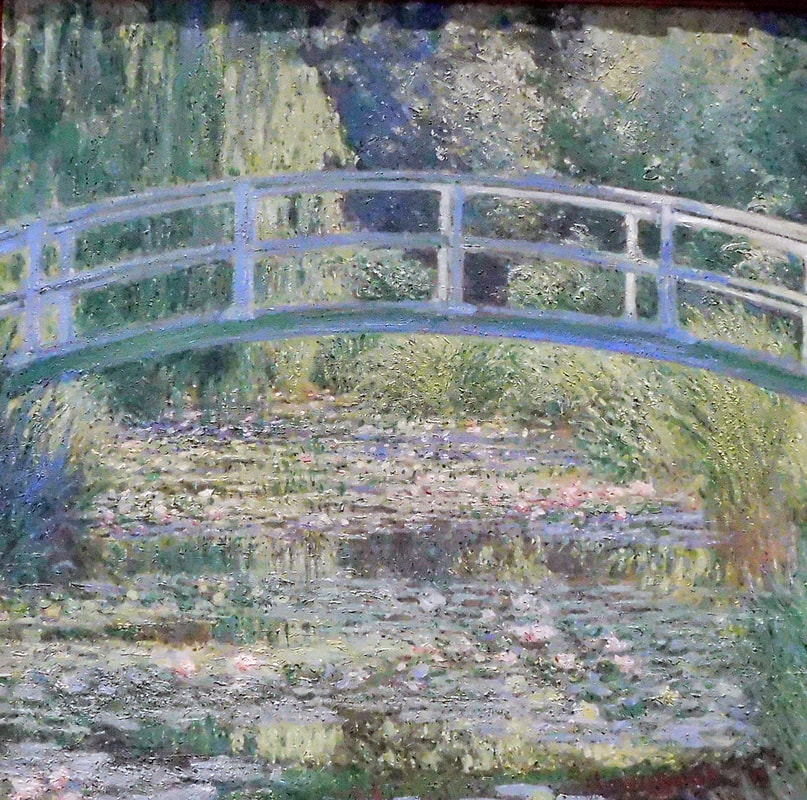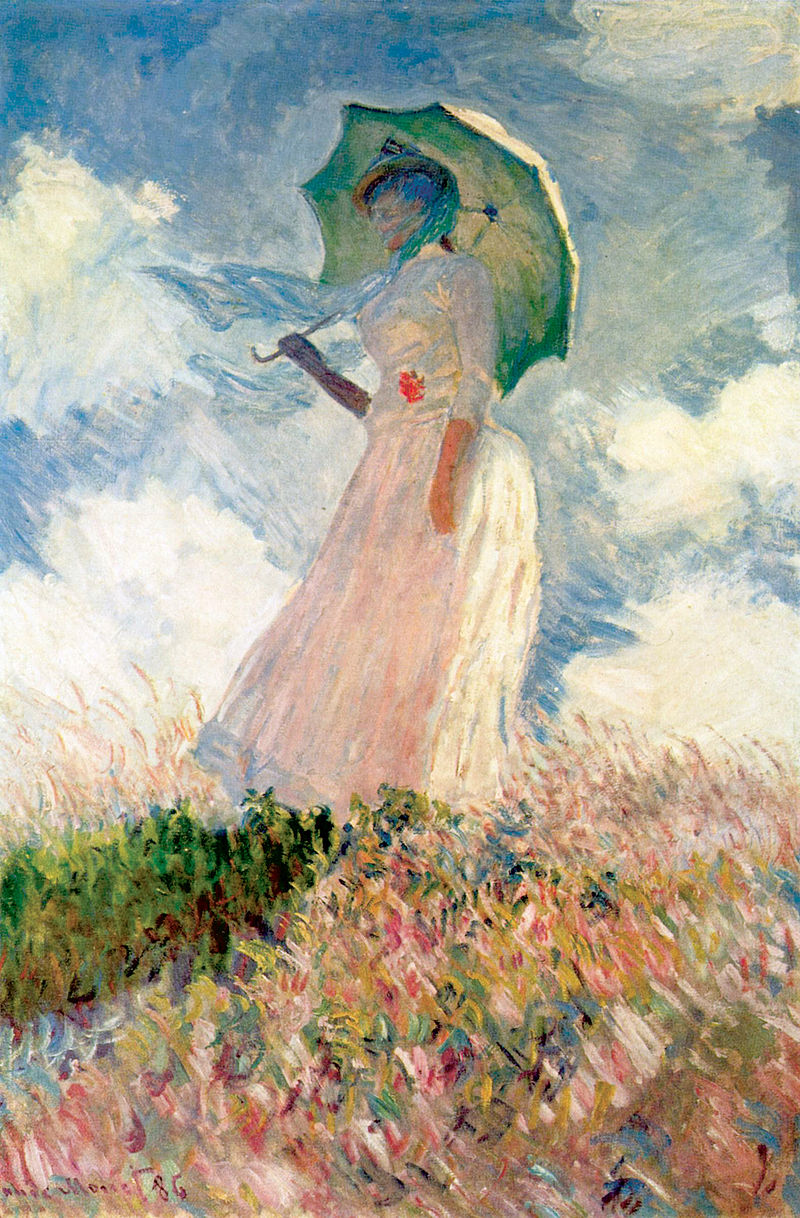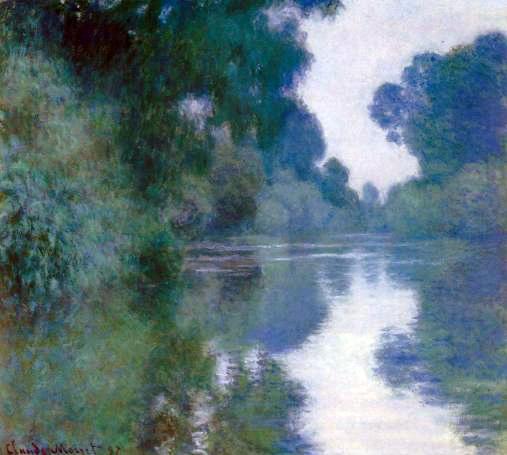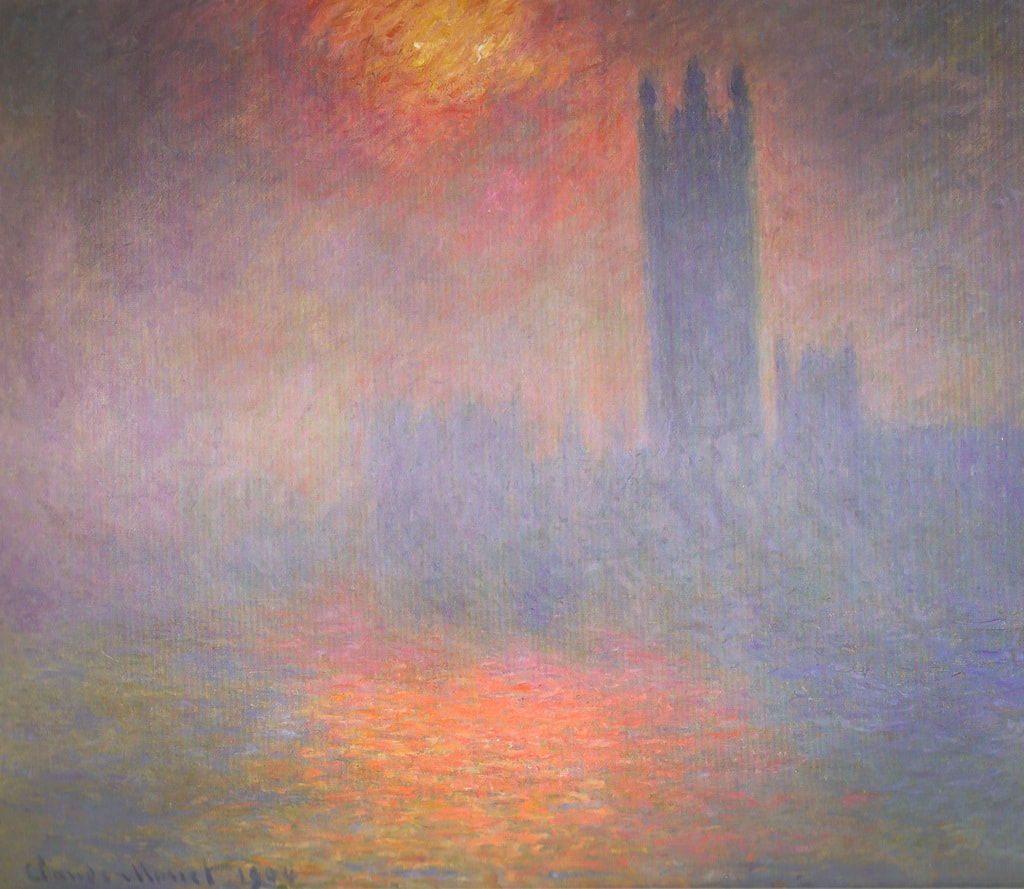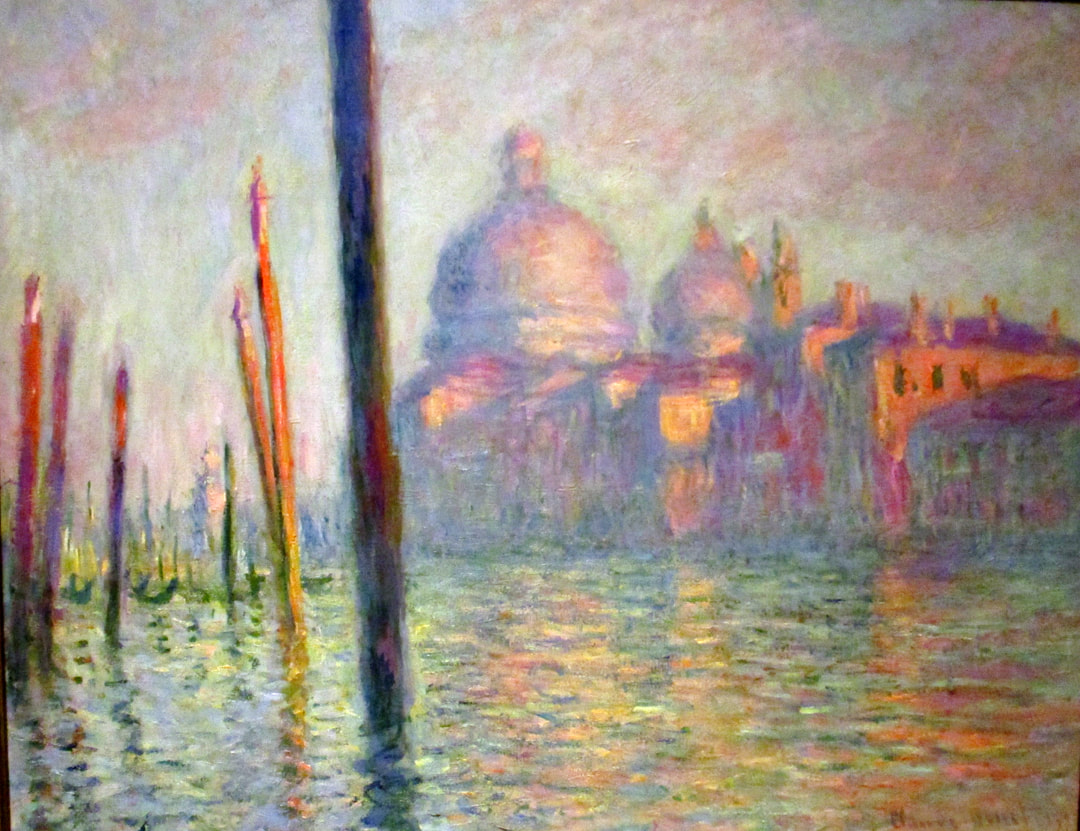AN APPRECIATION: Claude Monet
|
Monet's best known work from the Giverny period was a series of paintings of water-lilies and reflections in water known as the Decorations. He bequeathed part of the series to France and they are in the Orangerie in Paris. However, other paintings from the series are elsewhere Including the Museum of Modern Art in New York (above).
Monet also did several other well-known series during this period including paintings of haystacks, poplar trees and of Rouen Cathedral (below) A landmark feature of Monet's garden at Giverny is the Japanese-inspired foot bridge, which features in many of Monet's paintings. (above).
During the Giverny years Monet occasionally returned to subjects that he had explored earlier in his career. Above is a painting from the 1880s of Monet's stepdaughter Suzanne in a pose and seen from an angle that Monet had used with his first wife Camille in the 1870s.
Below: Monet returned to the Seine for inspiration throughout his career. Even while living at Giverny, Monet continued to travel, painting series of works in London (above) and in Venice (below).
|
Artist appreciation - Claude Monet (Part III The Giverny Years)

